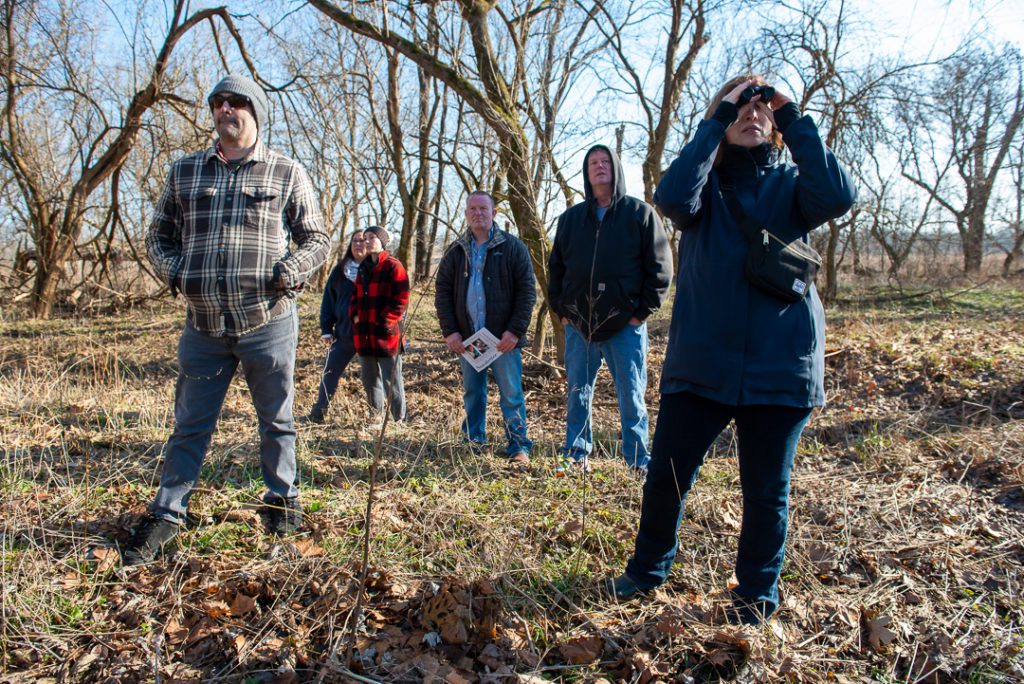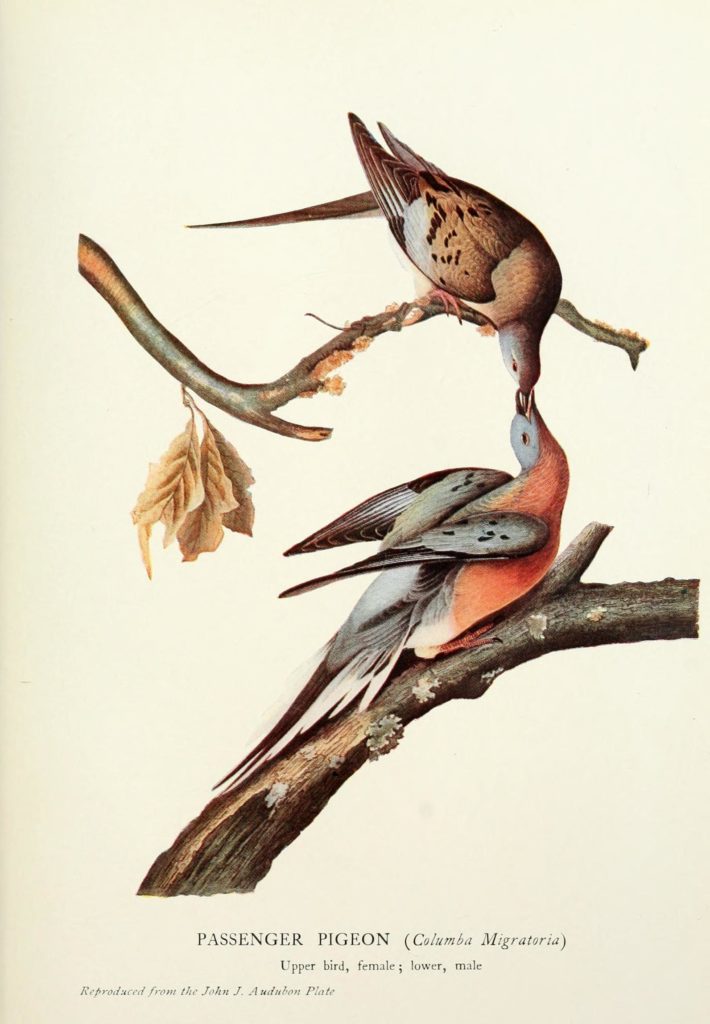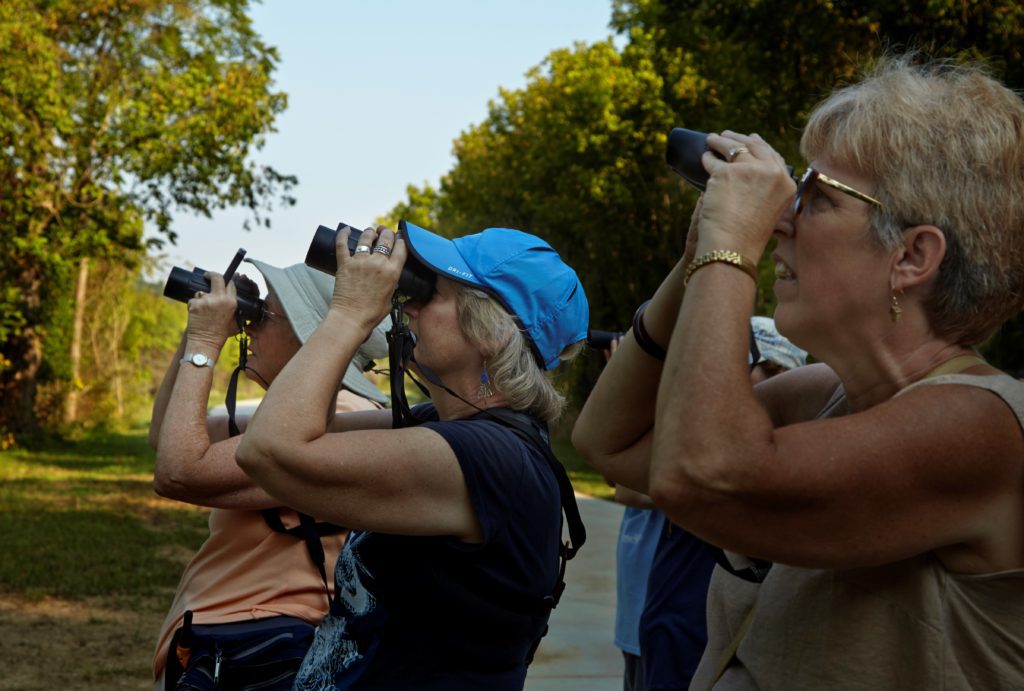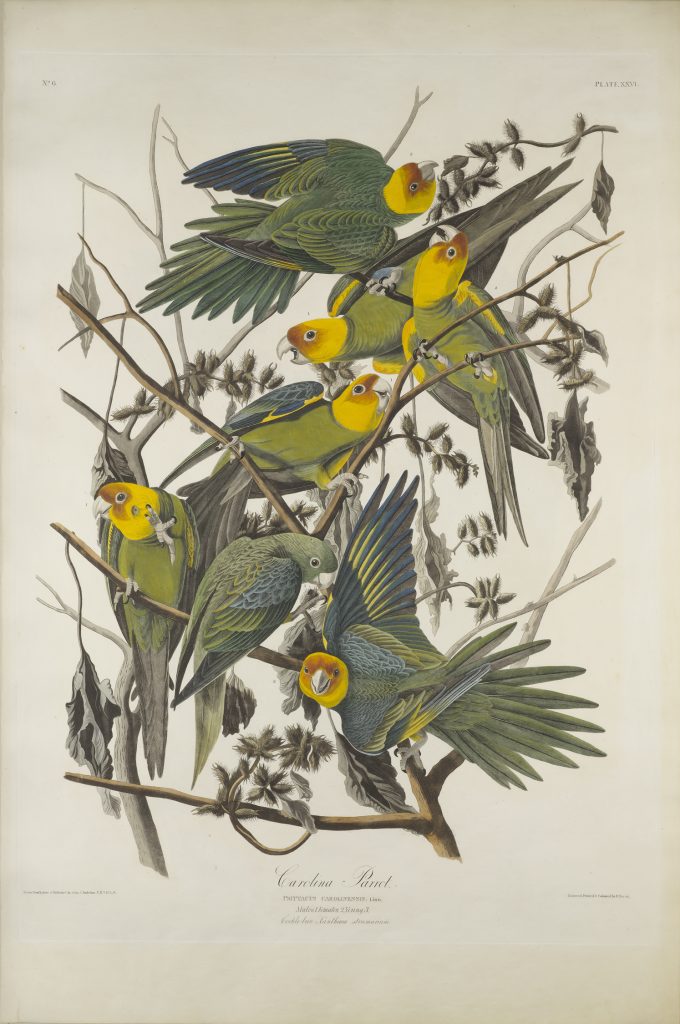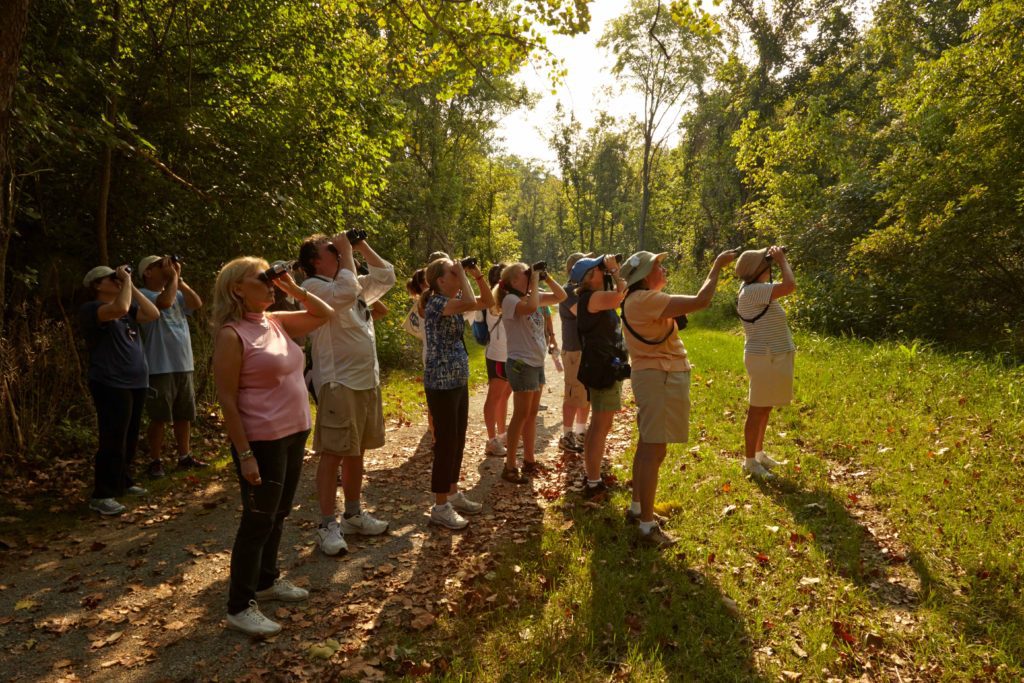The Birds We Once Knew
Bird watching is a popular hobby amongst park-goers in The Parklands. With over 130 species of birds that call The Parklands their home, it’s easy to see why it would be a popular choice. While many of our feathered friends nest in trees along the fork and the surrounding acreage, a couple of species that used to call this beautiful place home have been lost to time. Extinction has claimed the passenger pigeon and the Carolina parakeet that were once abundant across Kentucky.
The passenger pigeon was once the most abundant bird in North America, thought to encompass between 25 to 40% of the total US bird population. However, the last recorded sighting of a passenger pigeon in Kentucky was in 1898. The downfall of the passenger pigeon was largely due to hunting, whether for food, sport, or farmers protecting their crops. These birds lived in large communities, travelling and nesting together in forests across the US, but as settlers began clearing forests for fields, the pigeons were forced to nest in crop fields causing extensive damage. Farmers sought retaliation in the form of netting and shooting the birds to prevent population growth. A concerted effort to save the passenger pigeon by breeding them in captivity began in the early 1900s, but it was too late. The species required large communities to properly breed; the small flocks scientists kept in captivity were too weak and eventually died out. The last passenger pigeon, Martha, died in the Cincinnati Zoo in 1914. She is now on display at the Smithsonian Institute in Washington, DC.
The Carolina parakeet, the only native parrot species in the US, once called areas of Kentucky and much of the eastern portion of the country home. In a similarly heartbreaking story, this beautiful green, orange, and yellow bird was hunted into extinction by farmers and other settlers by the early 20th century. Land clearing for agricultural purposes contributed heavily to habitat loss, which caused the birds to incidentally destroy crops and farmland angering local farmers. While farmers considered them crop pests, whole flocks were easy to net and kill as they frequently would surround the body of a fallen flock member. Carolina parakeets were also frequently killed due to their vibrant plumage, which would be plucked and sold as a fun fashion accessory in the 19th century. The birds had completely disappeared from the wild by 1904 and the last captive Carolina parakeet, Incas, died at the Cincinnati Zoo in 1918.
While The Parklands is still home to 138 different species of birds to admire and photograph, it’s important to remember those we never got to enjoy and why they are no longer around. It serves as a crucial reminder to admire the native wildlife that calls Kentucky home and to protect the ecosystems they rely on to prevent further endangerment and extinction. The Parklands of Floyds Fork works hard to protect and preserve the natural Kentucky landscape and conserve our native plants and ecosystems for local wildlife to enjoy for generations to come. We could not do this vital conservation work without support from visitors and members like you. Thank you for supporting The Parklands and our work through donations, volunteering, and simply making us part of your daily life! If you’d like to further support our work in conservation and horticulture, you can donate on our website today.

